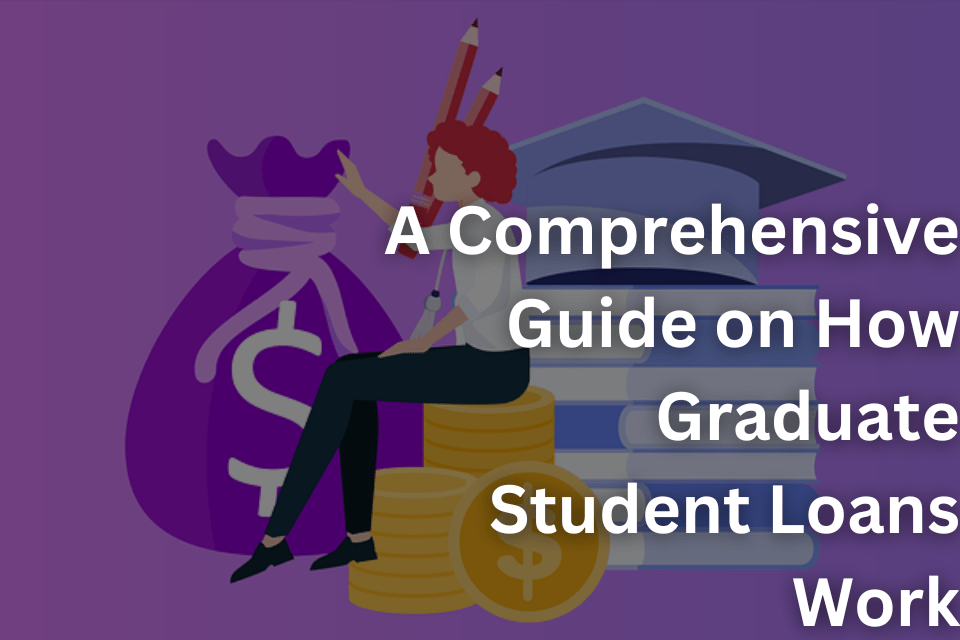Graduate student loans are a type of financial aid that can help students pay for their graduate-level education. They are similar to undergraduate student loans, but they typically have different terms and conditions, such as higher loan limits and longer repayment periods. This type of loan allows students to continue their education and specialize in a specific field, by providing them with the necessary funds to cover tuition, books, and other expenses.
The purpose of this guide is to provide a comprehensive overview of graduate student loans, including how they work, what types of loans are available, how to apply for them, and how to repay them. Additionally, this guide will also address the question of whether or not graduate student loans are worth it and will provide alternative forms of financing. By the end of this guide, readers should have a better understanding of the graduate student loan process, and will be better equipped to make informed decisions about their own financial aid options.
Types of Graduate Student Loans
Federal Direct Loans
- Unsubsidized Loans: These loans are available to graduate students regardless of their income level. The interest on unsubsidized loans accrues while the borrower is in school and during other deferment periods. The borrower is responsible for paying the interest, but can choose to capitalize it and add it to the loan balance.
- PLUS Loans: These loans are for graduate or professional degree students, and for parents of dependent undergraduate students. The borrower must have a good credit history to be eligible for a PLUS loan. The interest rate on PLUS loans is generally higher than on Direct Loans, and the loan fees are also higher.
- Consolidation Loans: These loans allow borrowers to combine multiple federal student loans into one loan with a single loan servicer. Consolidation loans can extend the repayment period and lower the monthly payments, but they also increase the total cost of the loan.
Private Loans
These loans are provided by private lenders, such as banks and credit unions. Private loans typically have higher interest rates and fees than federal loans, and they may also have more restrictive repayment terms.
Loan Forgiveness Programs
These programs are designed to forgive or cancel a portion of the borrower’s loan balance under certain conditions, such as working in a certain field or for a certain employer. Some examples of loan forgiveness programs include Public Service Loan Forgiveness and Teacher Loan Forgiveness.
Applying for Graduate Student Loans
Free Application for Federal Student Aid (FAFSA)
This is a form that must be completed by all students seeking federal financial aid, including graduate students. The FAFSA collects information about the student’s and their family’s income and assets, and is used to determine the student’s eligibility for federal grants, work-study, and loans.
Working with the school’s financial aid office
Once the FAFSA is completed, the student will receive a financial aid award letter from the school. The award letter will list the types and amounts of aid the student is eligible for, including any federal and private student loans. The student will then work with the school’s financial aid office to accept and finalize the loan.
Repaying Graduate Student Loans
Repayment options
There are several repayment plans available for federal student loans, including Standard Repayment, Graduated Repayment, Extended Repayment, and Income-Driven Repayment plans. Each plan has its own terms and conditions, such as the length of the repayment period and the amount of the monthly payments.
Loan forgiveness programs
As previously mentioned, loan forgiveness programs can forgive or cancel a portion of the borrower’s loan balance under certain conditions, such as working in a certain field or for a certain employer. It’s important for borrowers to research and understand the requirements for loan forgiveness programs and to stay current on payments to avoid defaulting on the loan.
How much can a graduate student get in loans?
Federal Direct Loans
The annual loan limit for graduate students is $20,500 for the unsubsidized Direct loan and the annual loan limit for Direct PLUS loans is the cost of attendance minus any other financial aid received.
Private Loans
The amount a graduate student can borrow through a private loan varies by lender and is often based on the student’s creditworthiness and income. Private loan limits are typically higher than federal loan limits.
Loan Forgiveness Programs
The amount of loan forgiveness varies by program, it could be a percentage of the loan or a fixed amount.
In the next section, we’ll address the question of whether graduate student loans are worth it and alternative forms of financing.
Are Graduate Student Loans Worth It?
Long-term financial implications
It’s important for students to carefully consider the long-term financial implications of taking out a loan. While a loan can provide the necessary funds to pay for an advanced degree, it also means the student will be responsible for paying back the loan with interest, which can be substantial.
Alternative forms of financing
Before taking out a loan, students should explore all alternative forms of financing, such as scholarships, grants, and work-study programs. Additionally, students should also consider the potential income increase after graduating with a graduate degree, whether it will be worth the amount of debt they will incur.
Conclusion
In this guide, we have provided a comprehensive overview of graduate student loans, including how they work, what types of loans are available, how to apply for them, and how to repay them. Additionally, we have also addressed the question of whether or not graduate student loans are worth it and provided alternative forms of financing. We hope that this guide has been helpful in providing a better understanding of the graduate student loan process, and that it will help readers make informed decisions about their own financial aid options.

